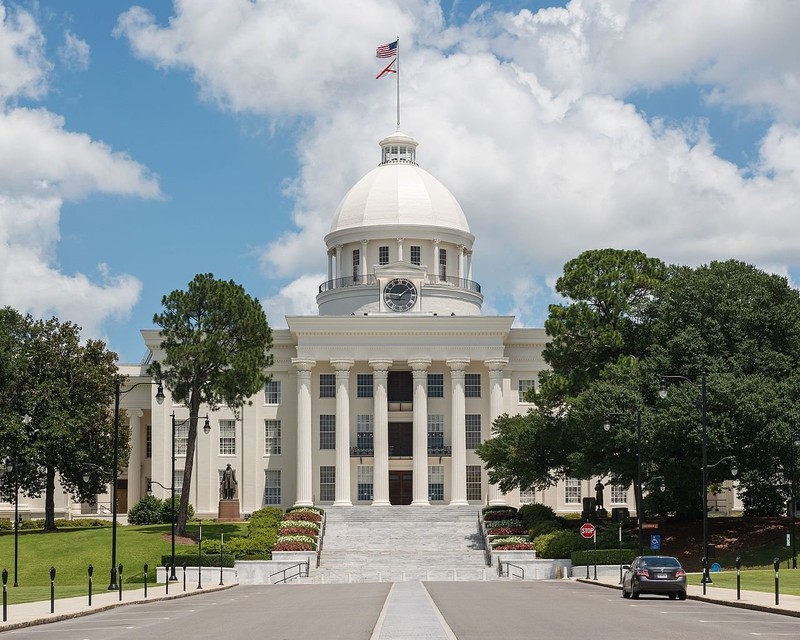Alabama State Capitol
Introduction
Text-to-speech Audio
Images
The Alabama State Capitol building was built in 1851 (a fire destroyed the previous building down to the foundations a few years earlier) and became the Confederacy's first capitol in February 1861.

Backstory and Context
Text-to-speech Audio
In 1965 the Alabama State Capitol was used again but this time by civil rights activists during the voting rights struggle. Passed in 1870, the Fifteenth Amendment made it illegal for state governments to disfranchise it citizens based on the color of their skin. Despite the amendment, many southern states found ways to keep African Americans away from the polls. Several states required African Americans to pass literacy tests that were designed to fail any Black person who took them, a poll tax was implemented, and the threat of violence or death to oneself or one’s family was also used to discourage voting. This ongoing violation of the Fifteenth Amendment led civil rights leaders and organizations such as Martin Luther King Jr. and SNCC to organize a march for voting rights from Selma to Montgomery, Alabama in March 1965.
There were three marches in the Selma to Montgomery March. The first two marches did not go beyond Selma after Alabama State Police beat the marchers on March 7 at the Edmund Pettus Bridge in Selma and the second attempt on March 9 ended with the marchers returning to Selma where later that evening a Black minister was killed. By March 21, the marchers were granted federal protection and started their third and final march to Montgomery. After travelling 54 miles along Highway 80, the marchers entered the city of Montgomery. On the steps of the Alabama State Capitol King delivered his “How Long, Not Long” speech that described the struggles of the African American in the past but also the change and hope that was occurring in 1965 and would continue in the future.
Cite This Entry
M., Ben, Michael Kent, and Lauren Milton. "Alabama State Capitol ." Clio: Your Guide to History. December 12, 2017. Accessed April 29, 2025. https://theclio.com/tour/442/16
Sources
Schroer, Blanche H. "Confederate Capitol." National Park Service - National Register of Historic Places Nomination Form. October 15, 1966. https://npgallery.nps.gov/GetAsset/be3e9d9f-681b-4dc5-897e-d247d2d11b29.
Photo: DXR, via Wikimedia Commons
https://en.wikipedia.org/wiki/Alabama_State_Capitol#/media/File:Alabama_State_Capitol,_Montgomery,_W...
"Selma to Montgomery National Historic Trail Alabama." nps.gov. Accessed on December 12, 2017. https://www.nps.gov/nr/travel/cultural_diversity/Selma_to_Montgomery_National_Historic_Trail.html

